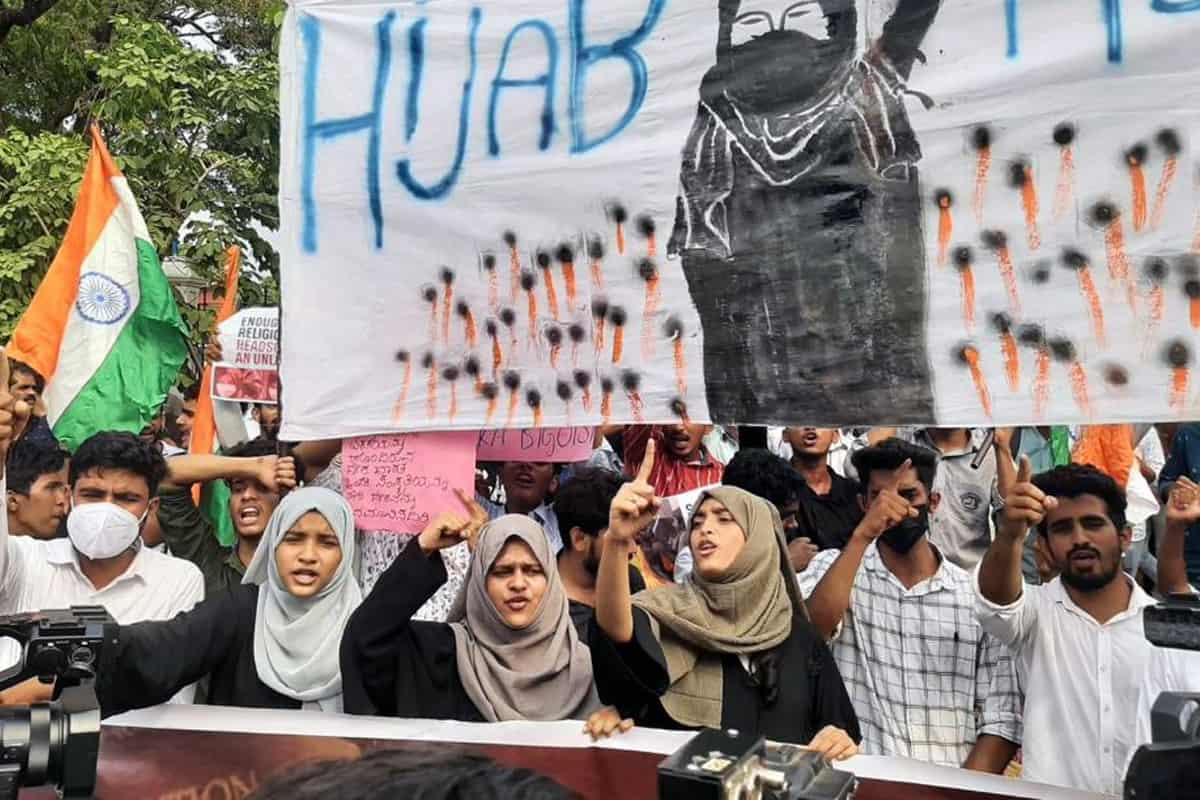
The judges framed questions, phrased as they worded them, and we consider each. One question was “What is ambit and scope of the right to freedom of ‘conscience’ and ‘religion’ under Article 25?” and another was “What is the ambit and scope of essential religious practices under Article 25?”
Article 25 (extracted to the extent relevant) reads:
25 (1) Subject to public order, morality and health …all persons are equally entitled to freedom of conscience and the right freely to profess, practise and propagate religion. (2) Nothing in this article shall …prevent State from making any law (a) regulating or restricting any economic, financial, political or other secular activity which may be associated with religious practice.
Shift to another, and Article 13 says the State shall not make any law which takes away or abridges the rights conferred by this Part and any law made in contravention of this clause shall, to the extent of the contravention, be void and (2) thereof clarifies that unless the context otherwise requires, “law” includes any …order, …rule, regulation, notification…having the force of law.
Firstly the State could not have made an order which abridges fundamental rights to profess practise and propagate religion. The only criteria is that the state can make a law that regulates secular activity which if it is associated with religious practice. It is important to notice the distinction between regulating secular activity that may be associated with religious practice and regulating practice of religion because that may find expression during secular activity. This distinction seems to have been glossed over. The state cannot make a law that regulates the right of a girl to freely profess practise and propagate religion in the manner in which she understands it so long as it does not adversely impact the rights of anyone else. It is a different thing that propagation of religion is under a cloud with laws against conversion about which much is understood and little admitted. To the extent the government order prevents the girls from expressing their religious beliefs by covering their heads, it is clearly void and violative of the constitutional guarantee. The court however thought otherwise, which of course it is entitled to, except that about that entitlement itself there was a question.
One would be forgiven for concluding that the questions “What is ambit and scope of the right to freedom of ‘conscience’ and ‘religion’ under Article 25?” and “What is the ambit and scope of essential religious practices under Article 25?” are both substantial questions which fall for consideration and which the Court had itself formulated as questions to be answered in this case. However, interestingly, where a substantial question of law as to the interpretation of the Constitution arises, the Court as a 9-Judges Bench in Puttaswamy v. Union of India held that when a substantial question as to the interpretation of the Constitution arises that Court alone under Article 145(3) is to decide what the correct interpretation of the Constitution shall be, and for this purpose, the Constitution entrusts this task to a minimum of 5 Judges of the Supreme Court. This bench however, of two judges and not five, while it quoted the above passage, did not refer the questions as to interpretation of the Constitution to the Chief Justice to constitute a Bench of five judges, but despite holding there is no dispute about the proposition, held that that recourse was not tenable! Their view was that the issue in the present matter is “as to whether the students can enforce their religious beliefs in a secular institution”. Is that what they were they doing?
In framing that as an issue the Court fell into error because students were not enforcing their religious beliefs, but only privately practising the requirements of their religious belief while in their educational institution i.e., this was not a case where they were engaging in secular activity associated with religious practice which the state could regulate but were wearing an additional item of apparel which under the belief system they subscribed to made that the requirement of righteous women. The GO therefore did not regulate secular activity but (see ** near end below) restricted the expression of their religious belief even though the State had no authority or right to interdict it.
Another question the judges framed was, “Whether fundamental rights of freedom of expression under Article 19(1) (a) and right of privacy under Article 21 are mutually exclusive or are they complementary to each other?” Before we proceed to look at this question we will notice that there are certain religious beliefs where gentlemen are required to remain completely naked as part of their belief. We will also notice that in the widely reported case involving the Babri Masjid the Supreme Court speaking through 5 Judges had held that where the issue is one of belief the court should refer to the belief of the subscriber of that belief and should not intervene there.
If I consider that exposure of one’s private parts (referred to in legal terms as indecent exposure) is something which can be considered objectionable even by prevailing standards that society subscribes to, would that set of gentlemen’s moving naked entitle me to say that my rights are being affected and they should be prevented? The answer is rather obvious because they would be held entitled to practice their religion as they perceived and if I considered it not acceptable that would be something which I would have to deal with and I would not be held entitled to have a law promulgated that would interdict their rights to practice their religion as they considered it should be practised, even though it can be argued that issues of morality can be said, in this instance, to be involved. The court we have seen has to defer to the belief of the worshipper.
It is therefore not possible to draw the conclusion that exercise of my right privately to cover my head so impacts the right of another person that I have to be prohibited from wearing a head covering and that the law that so prohibits me can be sustained on the ground that it is secular activity associated with religious practice and not a religious practice per se.
One question mentioned in a write up by someone was that when Namaaz is not compulsory how is Hijab compulsory? Firstly it is ridiculous to say Namaaz is not compulsory because it is and the fact that any number of people do not pray regularly 5 times a day or the men do not regularly pray 5 times a day at masaajid does not make the religious requirement any less compulsory. Second, whether any number of people practice or do not practice the religious belief in the manner in which others do is not a determinant of whether or not a certain practice is compulsory and to usefully quote the Supreme Court itself, the Court has to defer to the belief of the worshipper.
Shafeeq Rahman Mahajir is a well-known lawyer based in Hyderabad

